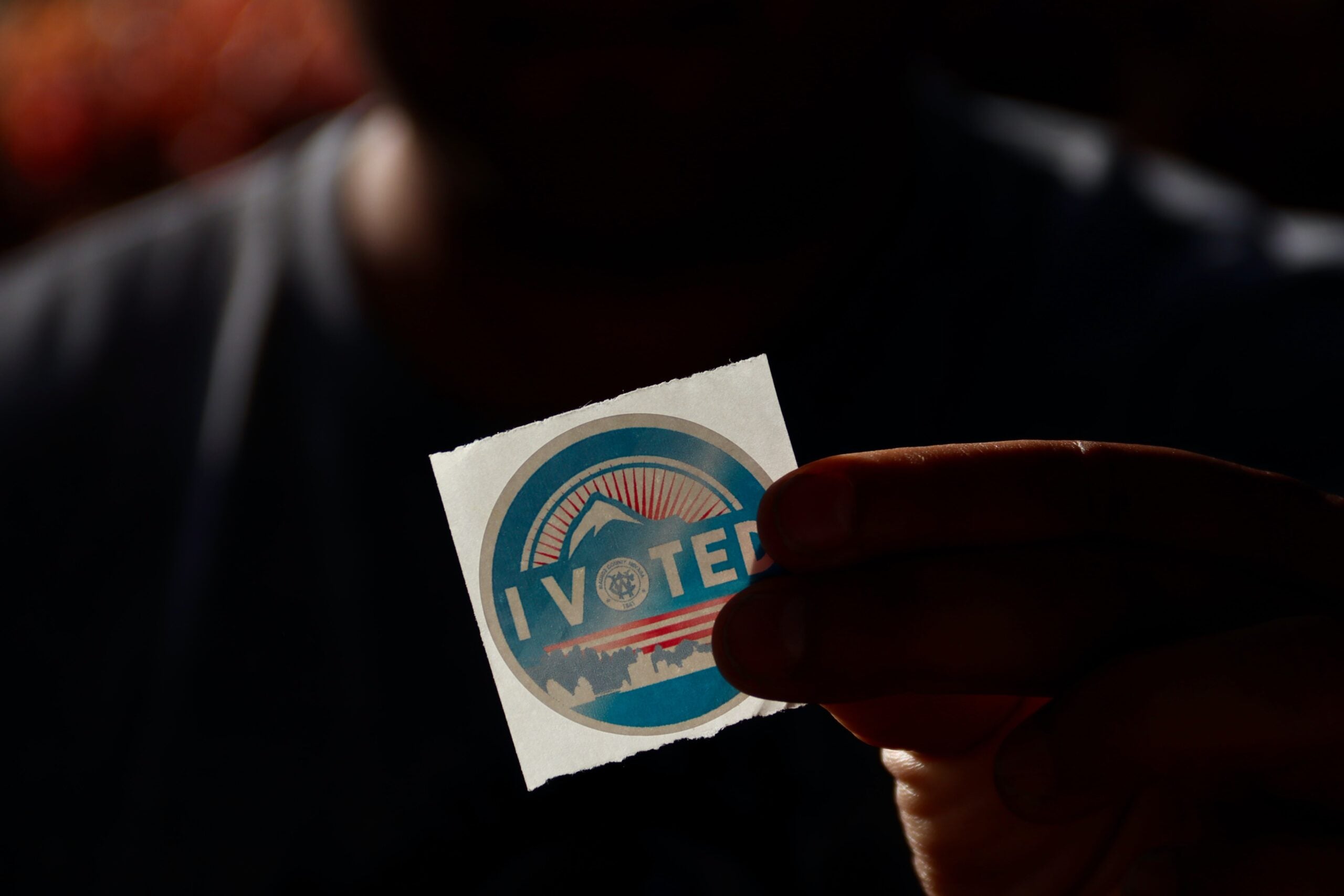As US Election Results Were Tallied, New Latinx History Professor Discussed the Hispanic Vote with Class
Mike Amezcua, a professor in the Department of History, is teaching one of the first courses centered around Latinx history in the United States at Georgetown. With the announcement that President-Elect Joe Biden won the election, Amezcua’s class holds particular significance as analysts seek to understand the political divide of Latinx voters in key states.
About Amezcua

Professor Mike Amezcua, Department of History
Amezcua started teaching at Georgetown this academic year. The historian’s research examines Latinx urban history in the 20th century, specifically how Latinx communities shaped post-World War II Chicago, Illinois.
He examines the traumatic forms of displacement that affected Mexican immigrant families such as Urban Renewal and Operation Wetback, a deportation campaign in the 1950s, and the social and political movements this engendered as they made their way into other communities in neighborhoods like Pilsen, Little Village and Back of the Yards.
While it is common knowledge that Black communities were segregated from white areas of cities through racist practices such as redlining, Amezcua hopes to shed light on similar instances that happened to Latinx residents.
“Many people think that the formation of Latinx communities happened naturally and peacefully, but in actuality, these neighborhoods were often formed in a context of violence and ethnic and racial hostility leading to white flight but also white ethnic community organizing to prevent diversification of their neighborhoods,” Amezcua says. “Latinx people are rarely mentioned in history books about racial segregation in America, which is a gap I am hoping to fill with my work.”
Elections and Latinx Identity
This semester at Georgetown, Amezcua is teaching US Latinx History, which is one of the first classes that focuses on this. Amezcua says that this course is particularly important this semester because students hear about the impact the pandemic, protests, and the election, have on the Latinx population in the United States and they want to know how to place these issues in a historical context.
“Students at Georgetown are by nature very politically engaged, but I think that part of that engagement requires an understanding of Latinx people in this community,” he explains. “There are 60 million Latinx individuals in the US but knowledge about placement of them in society and politics, not only now, but historically as well, is long overdue.”
In their first class after the election, Amezcua and his students discussed the current election results through the lens of Latinx voters. They specifically discussed the reasons for increases in support for Donald Trump and why Democrats underperformed in counties like Miami-Dade in Florida.
Abby Santizo (C’22) said that part of the problem is that the Latinx population has been homogenized by both progressives and conservatives.
“I think what several Democrats realized in this election is they can’t assume that the Latinx vote is a given,” she says. “There is so much diversity in the Latinx community that is not considered at all. I hear ‘why would they vote against themselves?’ and it is frustrating because in many instances Latinx people are just voting for what they believe which is different from what people assume about them.”
Many Democrats assumed that Latinx voters would vote for Biden due to statements made by Donald Trump regarding illegal immigration. But immigration is only one issue for Latinx voters.
“Several Latinx voters are deeply religious, so for issues like abortion or gay marriage, Latinx voters will often cast a ballot for a more conservative candidate,” says Edward Ramirez Pineda (C’23). “These voters are silent voters, but make up a huge portion of the Latinx population, and that is rarely considered.”
Students in Amezcua’s class also pointed out that many immigrants from Latin American countries came to the United States to flee oppressive political regimes in their home countries and vote according to the candidate and party that they see as the antithesis to the party they escaped. But, the students noted, the opinion about which candidate this is varies wildly depending on each individual voter and their own experiences.
“A lot of Venezuelan immigrants are adamantly against Trump because they think that his rhetoric is similar to what they saw happen in their home country,” said Carlos Carcamo (MSB’23). “They came here to get away from political oppression, so it is terrifying to see it happen again in the western hemisphere.”
Conversely, Latinx immigrants from other countries are very pro-Donald Trump’s policies.
“Republicans have done an excellent job of portraying the Democratic Party as a bunch of socialists, which terrifies immigrants from Cuba for example,” pointed out Nico Reyes (C’24). “Additionally, the longer you are in a country, the more you are going to become entrenched in that country’s culture and remove yourself from your own struggle. There is a huge desire amongst the Latinx community to whitewash themselves to fit in, which aligns more with a conservative narrative.”
The open dialogue format of Amezcua’s class allows his students to explore the nuances of Latinx identity, history, and culture, but his favorite part is introducing students to historical primary sources that allow them to see and imagine what other Latinx people wrote and thought in the past about the issues of their time. The new professor hopes they will apply this knowledge to their other endeavors on and off campus.
As part of his research, Amezcua will release his book, Making Mexican Chicago: From Postwar Settlement to the Age of Gentrification with the University of Chicago Press in the fall of 2021. His research was recently recognized with an award by the Urban History Association last month.
-by Shelby Roller (G’19)
